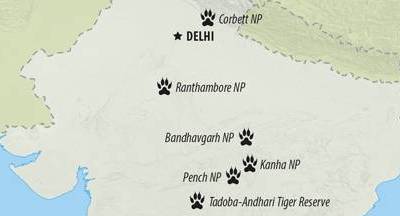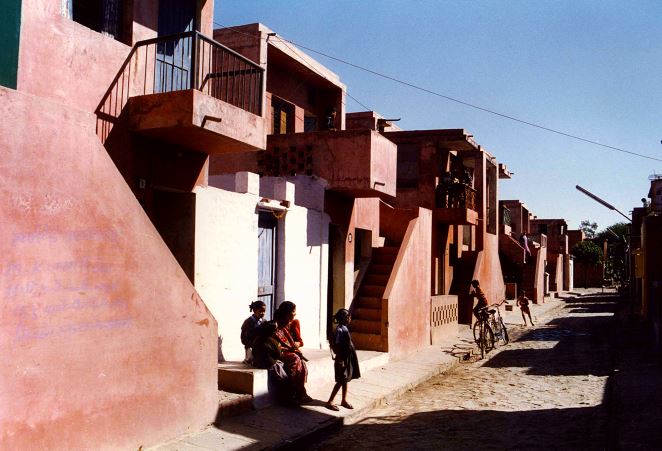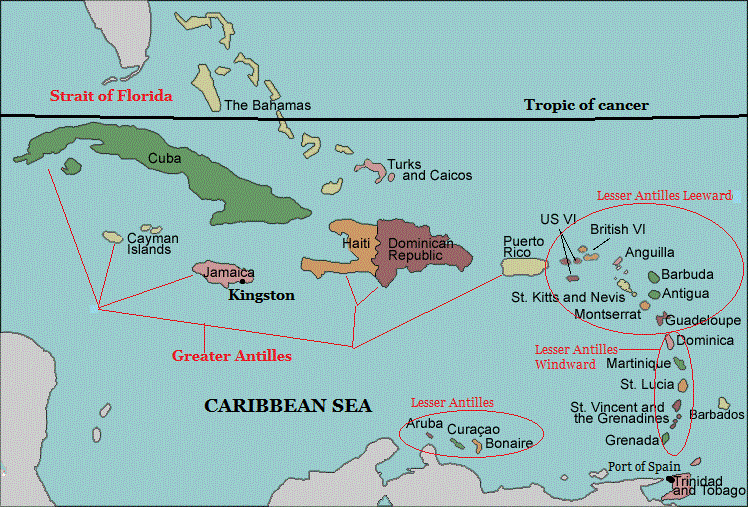Ranthambore Tiger Reserve
- The tiger reserve, named after the Ranthambore fort, is situated in Karauli and Swai Madhovpur districts of Rajasthan.
- The reserve is located at the junction of Aravallis and Vindhyan ranges.
- The reserve was established in the year 1969.
- It was earlier the private hunting grounds of Maharajas of Jaipur.

- The reserve comprises Ranthambore national park and two sanctuaries namely Sawai Mansigh and Keladevi.
- Poaching, habitat loss and fragmentation are the threats to the reserve.
- Tiger populations in Ranthambore are smaller, isolated populations.
- This makes them less genetically diverse due to lesser intermixing of different populations.
National Tiger Conservation Authority
- The National Tiger Conservation Authority is a statutory body under the Ministry of Environment, Forests and Climate Change.
- It was constituted under enabling provisions of the Wildlife (Protection) Act, 1972.
- The objectives of the NTCA are
- Providing statutory authority to Project Tiger so that compliance of its directives becomes legal
- Fostering accountability of Center-State in management of Tiger Reserves
- Providing for an oversight by Parliament
- Addressing livelihood interests of local people in areas surrounding Tiger Reserves
- The main function of NTCA is to approve, co-ordinate, research and monitor tiger, co-predators, prey habitat, related ecological and socio-economic parameters and their evaluation.
- NTCA gave a statutory backing to Project Tiger.
Flawed Quota Provision
- Telegana Government passed a bill to enhance reservation for Muslims and Scheduled Tribes to 12% and 10% respectively.
- However, the Department of Personnel and Training (DoPT) has said that the provisions of the Telangana legislation are in violation of a 1992 Supreme Court order that capped quota at 50%.
- In the Indra Sawhney case 1992, the Supreme Court ruled that clause (4) of Article 16 of the Constitution speaks of adequate representation and not proportionate representation.
- Article 16 ensures equality of opportunity in matters of public employment.
- Particularly, clause 4 of Article 16 empowers the state to make provisions for reservation of appointments or posts for inadequately represented backward classes.
Swatantra Sainik Samman Yojana (SSSY)
- The Union Cabinet chaired by the Prime Minister has approved the continuation of Swatantra Sainik Samman Yojana (SSSY) during 2017-2020 beyond the 12th Five Year Plan.
- In 1969, Government of India introduced the 'Ex-Andaman Political Prisoners Pension Scheme'.
- This was to honor the freedom fighters who had been incarcerated in the Cellular Jail at Port Blair.
- Later, a liberalized scheme, namely the 'Swatantrata Sainik Samman Pension Scheme, 1980' was implemented.
- From the financial year 2017-18 onwards, the nomenclature of the Scheme has been changed as 'Swatantrata Sainik Samman Yojana'.
- Besides the freedom fighters, spouses (widows/widowers), unmarried and unemployed daughters and parents of deceased freedom fighters are eligible for pension under the scheme.
- The scheme is implemented by the Division of Freedom Fighters and Rehabilitation under the Ministry of Home Affairs.
Pritzker Prize
- Balkrishna Doshi became the first Indian to receive the Pritzker Prize also dubbed as ‘architecture Nobel’.
- The international Pritzker prize is awarded each year to a living architect/s for significant achievement.
- It was established by the Pritzker family of Chicago through their Hyatt Foundation in 1979.
- It bestows laureates with $100,000 along with a bronze medallion.
- Balkrishna Doshi is a pioneer of low-cost housing design, committed to sustainable architecture that brought modernist design to a country rooted in traditionalism.
- His noted works include Life Insurance Corporation Housing in Ahmedabad, Vidhyadhar Nagar in Jaipur, Aranya Low cost Housing in Indore.
Aranya Low cost Housing

Parker Solar Probe
- NASA is inviting people around the world to submit their names online to be placed on a microchip aboard its Parker solar probe.
- Parker Solar Probe is a historic mission, as it is flying into the sun's atmosphere (or corona) for the first time.
- The corona is the outermost part of the sun's atmosphere that is unstable, producing the solar wind, flares and coronal mass ejections.
- In 2017, NASA renamed the spacecraft from the Solar Probe Plus to the Parker Solar Probe in honor of astrophysicist Eugene Parker.
- The spacecraft will travel directly into the sun’s atmosphere about 4 million miles from the star’s surface.
- Parker Solar Probe has three detailed science objectives:
- Trace the flow of energy that heats and accelerates the solar corona and solar wind.
- Determine the structure and dynamics of the plasma and magnetic fields at the sources of the solar wind.
- Explore mechanisms that accelerate and transport energetic particles.
Radiation Technologies in Agriculture
- Department of Atomic Energy (DAE) and Bhabha Atomic Research Centre (BARC) in particular are engaged in extensive research on use of radiation processing.
- Irradiation is very effective process in treating agricultural produce to enhance its shelf life.
- Unique advantages of radiation processing of products (including fruits, vegetables, cereals, pulses, spices, sea foods and meat products) are:
- Cold and clean process
- Effective elimination of harmful bacteria and insects/pests
- Treatment after final packaging to avoid recontamination
- Significant increase in shelf life
- DAE has developed crop varieties with desirable traits such as higher yield, seed size, improved agronomic and quality traits, early maturity and resistance to biotic and abiotic stresses.
- These were achieved using radiation induced mutation (and conventional) breeding.
- Two technology demonstration plants were set up based on R&D carried out at BARC:
- KRUSHAK at Lasalgaon, Nashik, Maharashtra
- Radiation Processing Plantat Vashi, Navi Mumbai, Maharashtra
- These plants are set up under the guidance of Board of Radiation & Isotope Technology (BRIT) under the Department of Atomic Energy.
Map of the day
Caribbean Islands

- Caribbean Islands comprises of the Greater and lesser Antilles along with Lucayan Archipelago (The Bahamas and Turks and Caicos).
- The islands border the Caribbean Sea and largely situated on the Caribbean plate.
- The Lesser Antilles is super set of three groups of islands namely Leeward in the north, Windward in the south and Lesser Antilles in east.
- Trinidad & Tobago and Barbados are also part of the Lesser Antilles.
- Last year hurricane Irma had a severe impact on the Antilles.
Source: PIB, The Hindu, Business Standard



